Facebook recently released Facebook Messenger app ads to the general public.
Aaaaaannnnnddddd digital advertising just got even more creepy than ever imagined.
Thanks, Zuck.
You can now directly message potential prospects via Facebook Messenger right in their inboxes. Kinda like LinkedIn’s Sponsored InMail. Meaning you can nag people 24/7 now.
But with all of these new features comes white noise. Using the right tactic is like finding a needle in a haystack on new platforms.
Just like with any new digital advertising platform, it’s hard to know what works and what doesn’t.
What will help you acquire customers and what will get you reported for stalking.
Here’s how to find that proverbial needle in the haystack by using Facebook Messenger ads to acquire customers.
The Three Main Types of Facebook Messenger Ads
Currently, Facebook offers three main advertising formats or placements with their new Messenger ad services.
Each one is different. But you can use them all together to create one big, happy, harmonious user experience.
Here, we’ll look at each in-depth, analyzing the best practices for each to get the best bang for your buck.
First up: Messenger destination.
1. Messenger Destination Ads
Your first Facebook Messenger ad option is destination-based.
This works like any old display-style ad on Facebook.
It sits right in the news feed for someone to click on.
But instead of taking them directly to the Facebook page or a landing page on a website, it takes them into a conversation on Messenger:
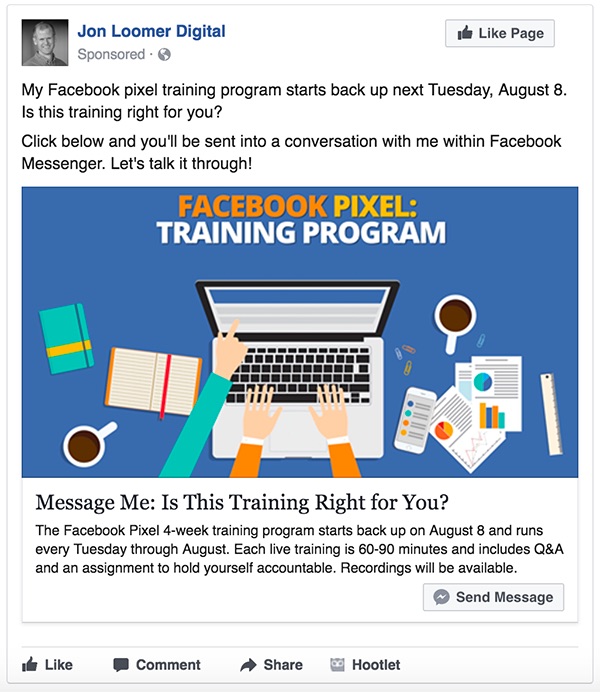
Instead of a call to action like “read more,” it says “Send Message.”
It’s a great conversation starter and strays from the normal display ads you see on Facebook.
For example, lead magnets are great, but they often get stale.
We’ve seen the same thing a thousand times over. And eventually, that means results decline, too.
These destination ads, though, can help streamline your customer acquisition process in two big ways:
- Qualification: You can initiate a conversation up-front before spending hundreds of dollars to get a user into your funnel. They work to start a conversation on topics that are either complex or expensive. For example, if you’re selling SEO services, these are perfect for initiating a qualification conversation before a full-scale consultation that costs time and money.
- Retargeting: Once you have a broad audience for your Messenger destination ads, you can funnel those engaged users into sponsored messages – the third format we’ll touch on today.
Messenger destination ads are best used to start a conversation. To get people interested in learning more about your offer without having to give up personal information or schedule a full-blown call.
(Who even talks on the phone anymore?)
These ads can also serve as a form of account-based marketing. Meaning you focus on qualifying prospects ahead of time rather than trying to get them into your funnel to qualify them at the end.
Account-based marketing seeks to narrow the pool early in order to spend more time on ideal clients.
This produces better clients that are more likely to convert, while trimming away the clients who are just there for a free eBook.
For example, Facebook expert Jon Loomer is already using the destination-based ads to start conversations ahead of time:
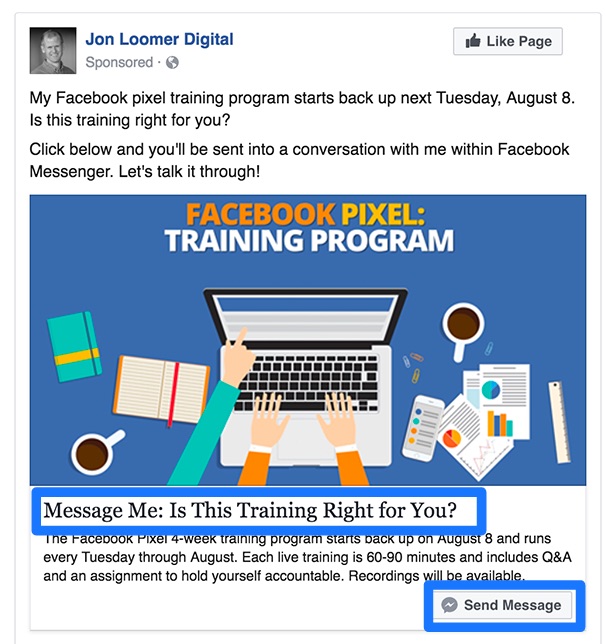
Instead of simply offering an eBook and collecting thousands of emails that won’t convert, he takes a direct approach:
Message Me.
Is this training right for you?
He’s effectively qualifying leads before they are even leads.
Now he can narrow down the candidates and skip the traditional funnel process where most won’t convert even at the bottom of the funnel.
DigitalMarketer is using the same strategy to get qualified users to interact with their business (before they’re ready to sign on the dotted line):
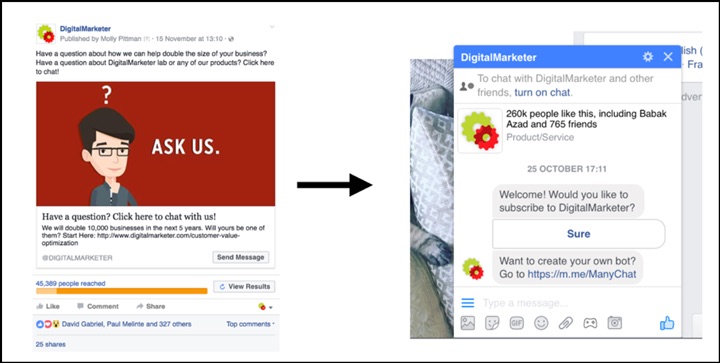
Once qualified users click “Send Message,” they are asked about subscribing to the newsletter and are allowed to ask any questions about how the platform can help their business.
These ads work just like a live chat on your site but without the need to drive that site traffic in the first place.
Meaning you can save money and time, all while qualifying prospects up-front.
To get started with these ads, head to your Facebook Business Manager and create a new ad based on the messages objective:
Under the messages section, make sure that “Click to Messenger” is selected:

This ad type will show up in the news feed and direct users to a message click, like the examples above.
After selecting your audience, scroll down to the ad format and choose either a video or a single image:

The key here is to get specific.
You don’t want a user to feel overwhelmed with ten options to message you.
Plus, it makes it easier to create a specialized message and offer by using a single image or video.
Next, upload an image or video:
Now comes the fun part. Start setting up your ad with a headline and text:
The goal here is to qualify prospects ahead of time and to get information on whether they’re right for your business or not.
You don’t want to appeal to everyone and waste your budget on clicks that don’t convert.
Ask the most burning question that your best customers ask when converting on your product, encouraging them to message you.
Be sure to select “Send Message” as your call to action, too.
This will start a conversation in their messaging inbox.
Now there is only one step left:
Setting up your welcome messages:

This will be the opening message that someone will receive when they click on your ad.
You can now start to customize your message format and even the customer actions available:
You can also add basic personalization to make each message feel personalized and targeted.
For example, in this ad, we are qualifying users up-front and allowing them to either click to a landing page off of Facebook or message us directly on the Messenger ad.
You can customize these buttons to your liking, driving traffic to your site or landing pages, or simply encouraging more conversation within Messenger.
Remember: Best practices for this ad focus on lead qualification and getting people to start a conversation with your business.
2. Messenger Home Placement
The Messenger home placement is slightly different than the destination-based ads.
This type focuses on sending messaging options directly to the home section of a user’s inbox.
Here’s what it looks like:
It works the same way as the Messenger destination ads do in the sense that a user has to initiate the conversation.
Meaning you can’t just message them individually. They have to accept your invitation to message first.
Here’s how Jon Loomer has structured his home placement messaging ads:
They work as a sponsored blast, just like your destination ads. But instead of appearing in the news feed, they show up in the messaging app.
It’s simply another way to get in front of your audience with targeted messages.
The majority of ads should focus on qualifying prospects and getting them interested in your business without asking for information just yet.
Thankfully, this one is extremely easy to set up.
All you have to do is check the “Home” box under the placement section of your ads:
This will allow your ads to show in the Messenger app as well as the newsfeed for a combined approach.
Follow the same strategy here of generating a conversation rather than trying to land prospects with a lead magnet or a quick sale.
3. Sponsored Messages Placement
Sponsored messages are one of the best new additions to advertising options on Facebook.
But you can’t use these sponsored message placements on just any audience.
Which is actually great if you think about it.
Imagine randomly getting a message from a company you’ve never heard of that asks you to buy SEO services or some other random, untargeted offer.
Blocked.
It’s safe to say that an approach like that would kill the user experience on Facebook. People don’t come to Facebook to get bombarded with ads.
They use the search network for that. The intent simply isn’t there.
Using these sponsored messages allows you to send a direct message straight to a user’s inbox. But the catch is that they have to engage with you first.
Meaning they have to start a message thread with you before you can message them again.
Once a user engages with you, then you can retarget them with sponsored messages.
For example, here’s how it would show up in your Messenger app:
It looks like any other message you’d get.
Plus, you don’t have to ask them to message you.
You can deliver a specific message without them needing to accept or initiate a call to action.
Since these users are already brand-aware, it’s best to message them with an offer or a discount now.
They know your brand, and you’ve likely qualified them up-front from your destination ads.
So you can push them further down the funnel.
DigitalMarketer has started using a coupon/discount-based tactic to convert these brand-aware users:
Jon Loomer has taken a similar approach, attempting to drive qualified, brand-aware users to his training program:
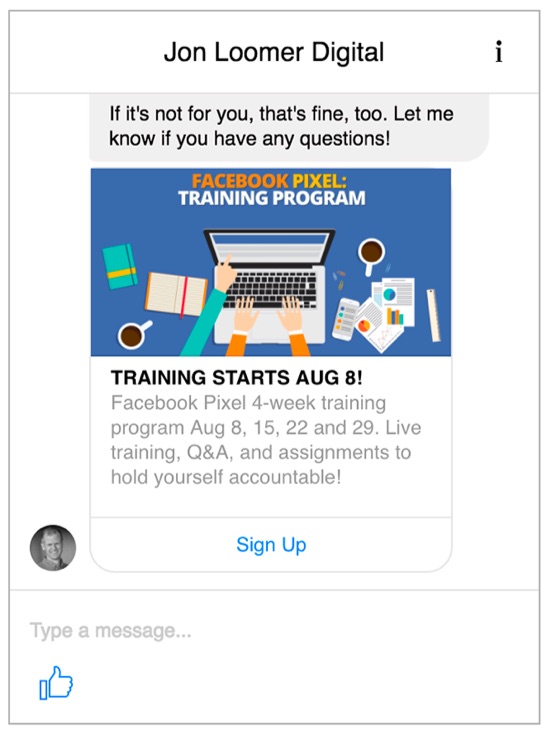
Sponsored messages are akin to lead magnets or purchase offers in traditional advertising.
You’ve already done the majority of the work:
- Finding the audience
- Generating brand awareness
- Evaluating their pain points
- Qualifying users
Now you just need to complete the last step:
5. Getting them to convert on an offer.
This should be your final step in customer acquisition with Messenger ads.
It should help you get their detailed information as a qualified lead. Then you can nurture them via other platforms like email or phone.
To set up this audience, you’ll need to create a new custom audience based on engagement:
Next, select the “Facebook Page” option:
Now, select “People who sent a message to your page” as the custom audience criteria:
This will allow you to create sponsored messages.
Now all you have to do is create another ad with the message-based custom audience you created, and you’re ready to convert these brand-aware users into full-on customers.
Finding your needle in the haystack doesn’t have to be hard.
Try implementing each one of these ad types to work together to fill your customer funnel.
Conclusion
Facebook Messenger ads offer great, new ways to reach customers.
But with any new platform or technique comes risk.
What works? What doesn’t? How do you know without wasting thousands of dollars on testing?
Start by using Messenger destination ads to qualify prospects up-front.
These ads take a cue from account-based marketing, where qualification is done at the beginning of the user journey rather than at the end.
Once you’ve done this, you can place Messenger ads directly within the app and even send more personalized messages to engaged users with sponsored messaging.
You can use Messenger ads to do a lot more than you may have thought possible. You can use them to build up brand awareness at the beginning, nurture newly-aware leads, and convert them into qualified prospects who are ready to buy.
All at a fraction of the competition you’re typically running up against. Which means if you do it correctly, a fraction of the cost you’d typically spend, too.
About the Author: Brad Smith is the founder of Codeless, a B2B content creation company. Frequent contributor to Kissmetrics, Unbounce, WordStream, AdEspresso, Search Engine Journal, Autopilot, and more.
from The Kissmetrics Marketing Blog https://blog.kissmetrics.com/facebooks-new-messenger-ads/
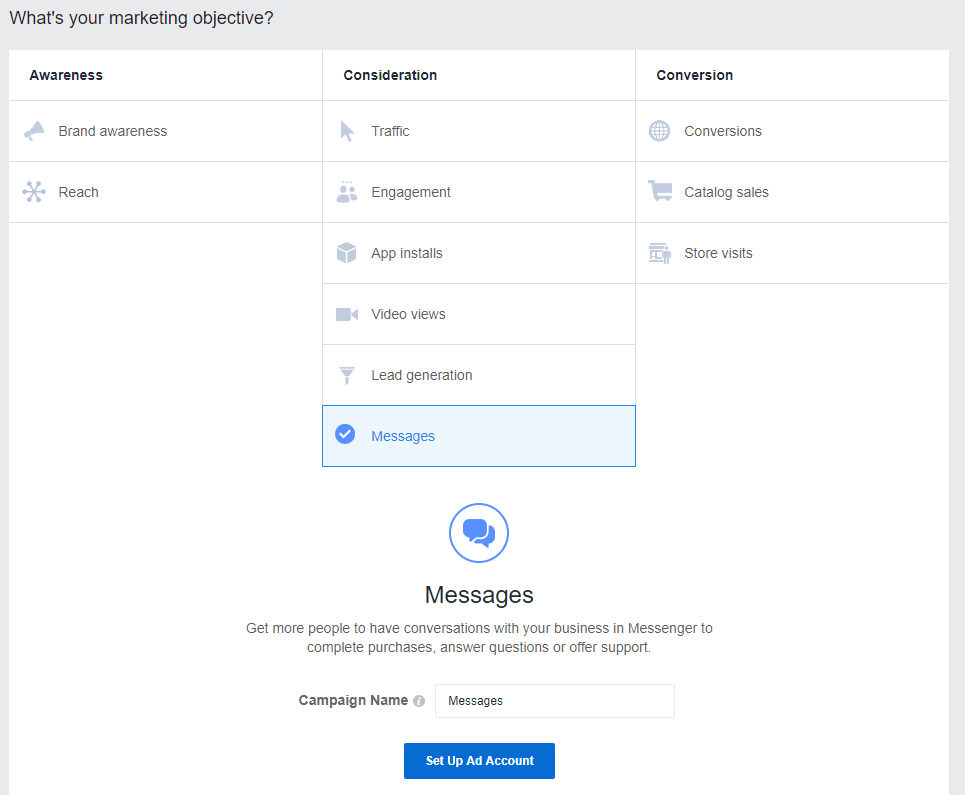
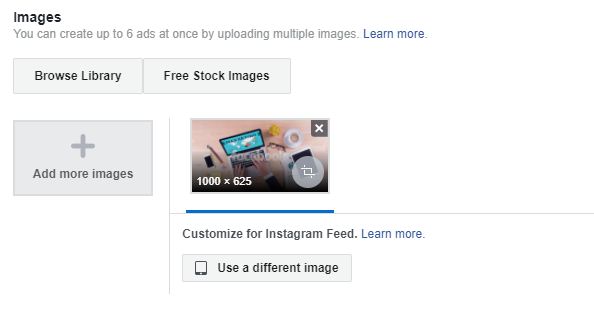
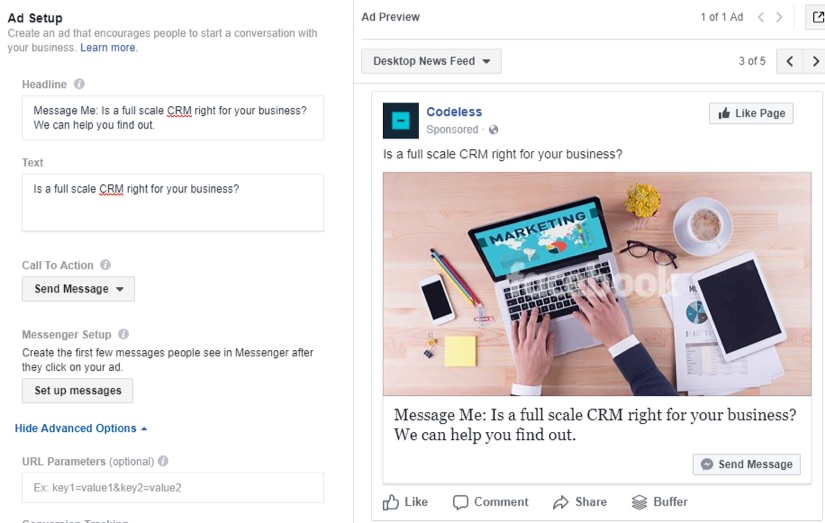


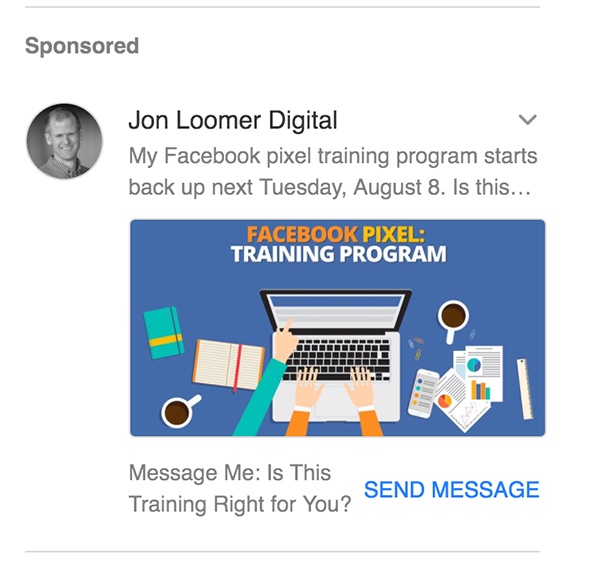
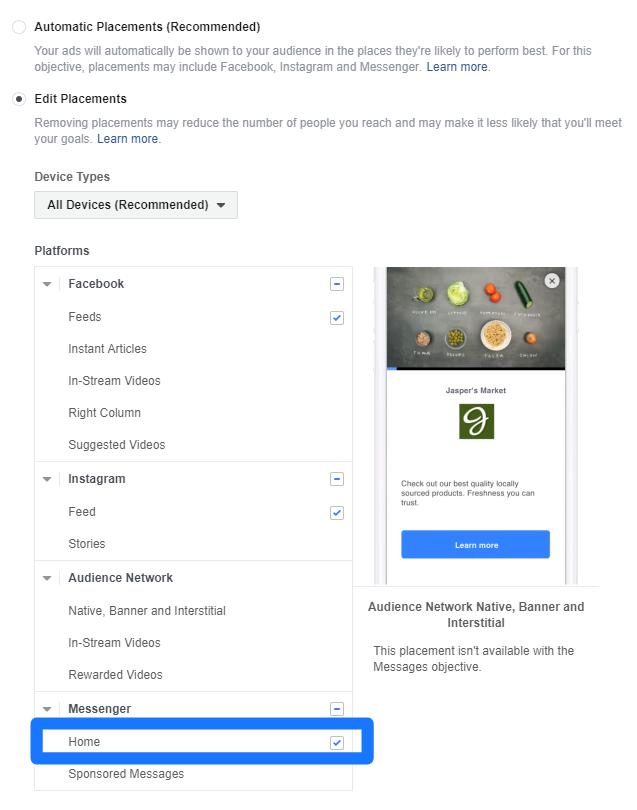



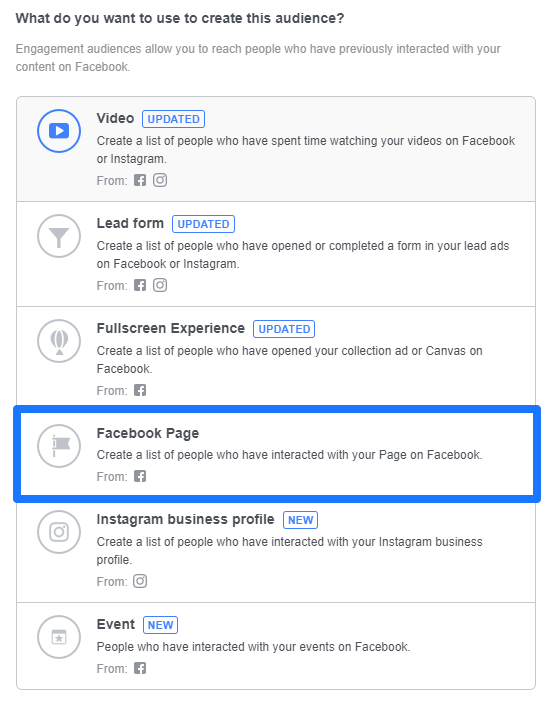

No comments:
Post a Comment